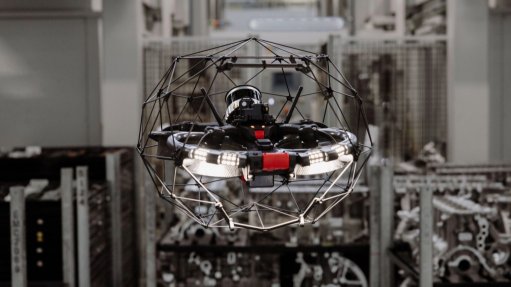The good and the bad in the latest IRP
The latest version of the Integrated Resource Plan (IRP) has some interesting changes, which could have far-reaching consequences for South Africa’s electricity mix. This IRP is a vast improvement on the 2010 plan, featuring more flexibility to respond to real-life situations as the economy changes and new technologies mature.
The IRP seeks to resolve various tensions – issues like the predicted growth of the economy and how to manage demand for power where growth prospects are uncertain, along with balancing the pros and cons of various technology options against the need to manage the cost of electricity and the country’s carbon intensity.
There are a several important elements of this plan worth noting. The first is that the plan indicates that South Africa’s original assumptions about electricity demand need to be revisited. The IRP argues that we will probably need less energy in future than originally envisaged. It takes this into account and tries to give some thought to what the installed capacity should look like in the next 20 to 30 years, compared with projected growth.
The latest IRP is more cautious about a quick advance towards building a nuclear fleet. While the plan does not explicitly rule out the inclusion of nuclear in South Africa’s energy mix, it suggests that a nuclear decision should be thought through more carefully and that nuclear should be weighed against other more cost-effective options. Without explicitly doing so, the IRP undoes any attempts at a rushed decision.
Overnight cost estimates for nuclear power have gone up, denting early optimism about affordably built nuclear plants. In any case, overnight costs do not take into account cost overruns, which are routine for these plants, and ancillary costs like the management of radioactive waste and the decommissioning of plants, which can make nuclear plants far more expensive and could be a noose around a country’s neck, given their long life spans.
The second important element is that this version of the IRP has a far clearer picture of regional options. For the first time, a stronger relationship is emerging between domestic national energy needs and the supply of energy from within the region. Two things have been added to this – the number of new hydropower opportunities since 2010 and the massive opening of the supply of gas in the region. While it considers gas an option, the IRP leans more towards caution than unbridled enthusiasm. Regional States are also becoming more active in renewables.
The vision for an integrated regional energy system will go a long way towards building regional trade and better integration of regional economies. Energy can be an important economic bridge builder.
The
hird element is that the IRP builds on the 2010 plan, looking at energy planning in relation to a carbon constraint. This is an important and profound shift. Even though we believe the IRP can stretch the envelope on the carbon intensity of the energy sector, these first steps must be acknowledged for their importance. The plan not only takes into account the possibility of an emissions cap, but also looks into new, emerging policy options, such as a carbon budget and a carbon tax. It flags the need to reconcile different policy instruments aimed at reducing carbon emissions because it points to the fact that they are different instruments aimed at achieving the same objective. If electricity sector carbon emissions can be reduced significantly in the most cost-effective way, the whole profile of South Africa’s carbon intensity will change.
It is clear that a policy decision is needed on different tools for capping carbon emissions in the electricity sector, with the options being an implicit carbon price, a carbon tax or a carbon budget.
To achieve this, we have to move away from coal. The IRP acknowledges coal resources are limited and their quality is declining. The IRP is far too optimistic in its assumption that coal costs are not likely to go above R350/t. Other experts are of the view that, if we move into the more expensive and difficult coal mining areas, the costs of mining coal will increase. If we include other costs, such as new rail and water supply, the dependence on coal is set to become a major constraint.
The case for renewables needs to be reconsidered in the IRP. There is room for greater ambition. The most disappointing aspect, considering that wind energy is the most cost-effective of the renewable-energy technologies, is that the proposed allocation of wind energy has been cut.
The IRP recognises that concentrated solar power (CSP) can play a role if nuclear costs are found to be too high. A larger share of CSP could play a role in fulfilling the baseload needs. CSP costs, though, will not come down overnight. South Africa needs to work with the international community to find ways to slash CSP costs. Specialised funds like the global Clean Technology Fund can play a role in ramping up the scale of CSP and, in so doing, bring down costs and improve technology performance.
While the IRP is a long-term plan, it provides little guidance on solving the immediate energy crisis. In my view, this can only be solved by bringing forward the roll-out of renewables. Modular technologies like renewables should be considered to solve immediate needs. Even though the average weighted costs of renewable energy are likely to be slightly higher than the cost of coal-generated electricity, this remains a better scenario than power disruptions, which some estimate to have cost R75/kWh when we last had blackouts.
On the whole, the plan is a good example of how other government infrastructure planning should be undertaken (water is one example), in which the needs of the country are not met sporadically or incoherently, but with much forward thinking and greater levels of transparency on how some decision options are put on the table. There is a lesson here for the President’s strategic infrastructure programme on how to do things.
Article Enquiry
Email Article
Save Article
Feedback
To advertise email advertising@creamermedia.co.za or click here
Comments
Announcements
What's On
Subscribe to improve your user experience...
Option 1 (equivalent of R125 a month):
Receive a weekly copy of Creamer Media's Engineering News & Mining Weekly magazine
(print copy for those in South Africa and e-magazine for those outside of South Africa)
Receive daily email newsletters
Access to full search results
Access archive of magazine back copies
Access to Projects in Progress
Access to ONE Research Report of your choice in PDF format
Option 2 (equivalent of R375 a month):
All benefits from Option 1
PLUS
Access to Creamer Media's Research Channel Africa for ALL Research Reports, in PDF format, on various industrial and mining sectors
including Electricity; Water; Energy Transition; Hydrogen; Roads, Rail and Ports; Coal; Gold; Platinum; Battery Metals; etc.
Already a subscriber?
Forgotten your password?
Receive weekly copy of Creamer Media's Engineering News & Mining Weekly magazine (print copy for those in South Africa and e-magazine for those outside of South Africa)
➕
Recieve daily email newsletters
➕
Access to full search results
➕
Access archive of magazine back copies
➕
Access to Projects in Progress
➕
Access to ONE Research Report of your choice in PDF format
RESEARCH CHANNEL AFRICA
R4500 (equivalent of R375 a month)
SUBSCRIBEAll benefits from Option 1
➕
Access to Creamer Media's Research Channel Africa for ALL Research Reports on various industrial and mining sectors, in PDF format, including on:
Electricity
➕
Water
➕
Energy Transition
➕
Hydrogen
➕
Roads, Rail and Ports
➕
Coal
➕
Gold
➕
Platinum
➕
Battery Metals
➕
etc.
Receive all benefits from Option 1 or Option 2 delivered to numerous people at your company
➕
Multiple User names and Passwords for simultaneous log-ins
➕
Intranet integration access to all in your organisation


















